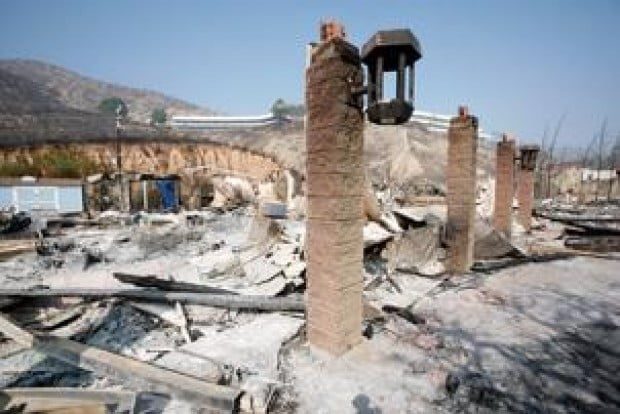
City leaders meet with the governor to discuss emergency preparedness plans.
By Melonie Magruder / Special to The Malibu Times
The tallies from the wildfires last month are grim. More than 400,000 acres burned, half a million residents evacuated and more than 2,000 homes and buildings destroyed, with a price tag of more than $1 billion.
With county fire departments reeling and devastated canyon communities preparing for another possible week of Santa Ana winds that fed last month’s flames, municipalities throughout the Southland are assessing what steps governmental agencies can organize to minimize fire danger in the future.
Malibu’s Mayor Pro Tem Pamela Conley Ulich said Gov. Schwarzenegger has already met twice with the Malibu City Council to discuss emergency preparedness plans.
“We talked about two immediate necessities,” Conley Ulich said. “Number one, we need help with brush clearance in the canyons. We are talking to the Coastal Commission and various agencies to see about overriding ESHA [Environmental Safety Habitat Areas] rules so there are no issues about what we can clear.”
ESHA regulations have strict guidelines for human activity along the coast to protect native species’ habitat and avoid widespread land erosion.
“Number two, we are looking at the costs of this fire caused by downed power lines versus those of the past,” Conley Ulich continued. “With global warming issues, we can expect drier seasons and stronger Santa Ana winds. So we are looking at routing our utility lines underground. [It has not been officially determined as of press time that downed power lines were the source of the Malibu Canyon Fire.]
“There might be state and federal security issues with undergrounding,” Conley Ulich said. “But in the long run, this might be the most effective single step we can take.”
Conley Ulich said the governor’s office has been receptive to such long-term solutions. “This will be a combined financial responsibility of the federal, state and local governments,” she said.
The Mayor Pro Tem also said the city was looking to organize a Town Hall meeting shortly after the end-of-year holidays, led by Certified Emergency Response Team Coordinator Brad Davis.
“In City Council meetings, we’ve talked about emulating the Topanga Coalition for Emergency Preparedness guide,” she said. “And how to organize volunteers. During our fire, Pepperdine had a thousand students ready to help.”
Conley Ulich pointed out two important state agencies for residents to note. “For people who want to help, but don’t know what to do, there is the California Volunteers organization (www.californiavolunteers.org) and people should know about the California Department of Insurance Consumer Hotline (800.927.HELP).”
Schwarzenegger has been generally praised for the state’s quick and effective response to the fires, but is keen to heighten preparedness measures. Last Friday, he declared a state of emergency in Riverside County in anticipation of strong Santa Ana winds forecasts.
“So there will be six million dollars coming through,” the governor said, when tallying emergency agencies’ efforts at a public appearance last Friday with Ruben Grijalva, director of California Department of Forestry and Fire Protection, or CAL FIRE.
“We have 22 air tankers from CAL FIRE and 25 air tankers from other agencies,” Grijalva said. “We have six helicopters from the California National Guard, four helicopters from the Navy and six from the Marines. We are ready to go into action.”
